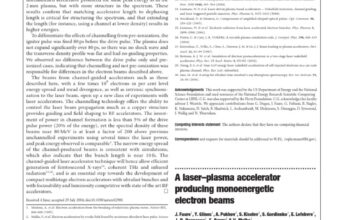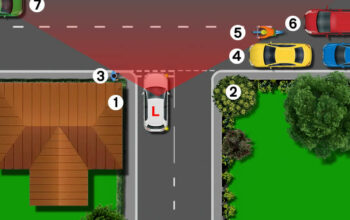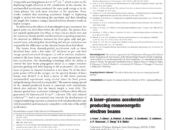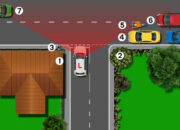The transition from expansive prairie grasslands to energy frontiers encompasses an intriguing paradigm that reflects humanity’s evolving relationship with nature and technological advancement. The juxtaposition of these realms raises fundamental questions about sustainability, environment, and the future of energy consumption. The prairies, characterized by their biodiversity and distinct ecosystems, stand in stark contrast to the burgeoning fields of alternative energy that seek to harness, rather than exploit, natural resources. This dynamic relationship merits a closer examination.
The prairie grasslands, predominantly found in regions such as North America, represent one of the planet’s most endangered ecosystems. They serve as a vital habitat for numerous flora and fauna, contributing significantly to ecological stability. The rich soil, diverse species, and unique climatic conditions create an environment that nurtures a plethora of life forms, thereby sustaining various agricultural practices. Grappling with the continued encroachment upon these grasslands ignites a discourse about conservation versus development.
As industrialization burgeoned, the allure of these extensive grasslands yielded to the formidable pressures of urban expansion and agricultural mechanization. This change not only modified the landscape but also displaced indigenous species and disrupted the intricate balance of local ecosystems. The fascinating ability of human innovation to alter landscapes for agricultural and energy purposes reveals a fundamental aspect of humanity: the relentless pursuit of progress. However, this progress does not exist in a vacuum; it carries with it profound implications.
The quest for energy solutions has catalyzed the exploration of alternative energy sources, many of which are rooted in the very elements that characterize the prairies. Wind energy, for instance, has gained considerable traction over the past few decades. The vast, uninterrupted stretches of prairie make ideal locations for wind turbines. Harnessing wind energy signifies a transformative shift from traditional fossil fuels to more sustainable, renewable sources. The juxtaposition of turbines against the natural topography evokes a medley of emotions—both the promise of clean energy and the tension of altering the ‘natural’ landscape that once thrived in biodiversity.
Adoption of solar power is another pillar supporting the transition from prairie to energy frontier. Photovoltaic systems, which convert sunlight into electricity, can be deployed in rural areas, including agricultural land already under cultivation. The integration of solar panels within farming practices has emerged as an opportunity for farmers to diversify their income while contributing to renewable energy initiatives. This symbiotic relationship exemplifies how agriculture and sustainable practices need not be mutually exclusive.
However, the temptation for exploitation poses potential threats to the very ecosystems that underpin the functionalities of these renewable energy sources. The installation of solar farms and wind turbines necessitates careful consideration and planning to mitigate habitat destruction and maintain ecological integrity. It begs the question: Can energy advancements coexist with preservationist practices? The challenge lies in striking a balance between harnessing energy and maintaining the natural environment that sustains it.
The romanticization of the prairie grasslands also elicits reflection on a collective psychological and cultural affinity towards nature. There exists an intrinsic allure to the open fields, the blooming flora, and the diverse inhabitants, which resonates deeply within human consciousness. This fascination often manifests as an undercurrent in energy discourse, as societies wrestle with the implications of energy production on cherished landscapes. This connection to the land forms a foundational aspect of available public sentiment, imposing an ethical obligation on decision-makers to consider environmental ramifications in energy strategies.
Moreover, the evolving paradigm of energy production invites a re-evaluation of cultural values surrounding consumption and sustainability. The tendency towards rapid consumption, reinforced by a disposable society, stands in stark contrast with the principles of sustainability that advocate for harmony between human activity and the natural world. Addressing these contradictions necessitates an examination of energy policies that prioritize both technological advancement and ecological preservation.
Advancements in technology present unprecedented opportunities to bridge the gap between the pragmatic application of energy solutions and the preservation of the natural world. Innovations in energy storage, efficiency improvements, and smart grid technologies pave the way for a more resilient energy future. These technologies thrive on the principles of efficiency and optimization, which offer the chance both to honor the prairie ecosystems and to fulfill society’s energy needs. Such a future necessitates collaboration across disciplines, integrating ecological insight into engineering, policy, and community engagement.
In conclusion, the intriguing transition from prairie landscapes to energy frontiers stands as a testament to humanity’s capacity for adaptation and innovation. The delicate balance between harnessing energy and preserving natural ecosystems presents both challenges and opportunities. As societies seek to address escalating energy demands amidst ecological imperatives, it is critical to forge pathways that honor both technological advancement and environmental stewardship. The future of energy production must emerge from a nexus of respect for natural ecosystems, an embrace of sustainable practices, and a commitment to preserving the sanctity of landscapes that have long shaped human life. The continued evolution from prairie to energy frontier invites a collective responsibility—one rooted in understanding, innovation, and empathy for the world we inhabit.












